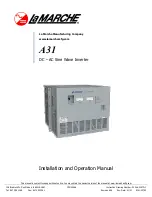
106
Feature Reference
●
Edit Mode
●
Signal Select
≤
Normal, Breath Noise Amp., Flow Rate Saturation, Beat, Slit/Friction, Reed.
Selects the signal to be used by the carrier or modulator.
This is the total output of the instrument model: a mix of the driver,
pipe/string, and tap signals.
This signal represents the instantaneous amplitude of the breath noise
produced at the driver. It is basically a highly distorted version of the
Slit/Friction signal described below.
When the pressures on either side of an aperture (e.g. a mouthpiece/
reed assembly) differ, a corresponding flow of air is produced. There is,
however, a limit to the speed of the airflow which can be produced
(saturation). The relationship between the pressure difference and
resulting airflow is derived as the Flow Rate Saturation signal.
The beat signal represents contact between the vibrating reed and the
mouthpiece.
As the reed vibrates, the area of gap (slit) between it and the mouth-
piece varies accordingly. The Slit/Friction signal corresponds to the
varying are of the reed/mouthpiece slit.
This signal is derived directly from the flexing of the reed.
Normal
Breath Noise
Amplitude
Flow Rate Satura-
tion
Beat
Slit/Friction
Reed
●
HPF Cutoff
≤
17.0 Hz … 11.2 kHz.
Both the modulator and carrier blocks have high-pass filters that can be used to roll
off the low frequencies of the corresponding signal. This parameter sets the cutoff fre-
quency of the carrier or modulator high-pass filter.
●
Over Drive
≤
0.063 … 15.31.
This parameter boosts the corresponding modulator or carrier signal, forcing it into
distortion and thereby drastically changing its harmonic structure. The higher the value
the greater the distortion. No distortion is produced below a setting of “
1.0
”.
●
Level (Carrier only)
≤
0 … 127.
Sets the output level of the carrier. The higher the value the greater the output level.
●
Balance
≤
-64 … 63.
Sets the balance between the “wet” (the output of the harmonic enhancer) and “dry”
(the direct signal) signals. The higher the value the more “wet” the signal, and therefore
the more pronounced the harmonic enhancer effect. The carrier and modulator page
“
Balance
” parameters are linked.
Содержание VL7
Страница 4: ...Owner s Manual 2 Feature Reference ...
Страница 9: ...6 Feature Reference ...
Страница 23: ...20 Feature Reference Play Mode ...
Страница 32: ...29 Feature Reference Edit Mode ...
Страница 44: ...41 Feature Reference Edit Mode Common Miscellaneous ...
Страница 64: ...61 Feature Reference Edit Mode Reverb Effect Block Diagram Common Effect R In L In R Out L Out Reverb ...
Страница 161: ...158 Feature Reference Utility Mode MIDI Bulk Dump UTILITY MODE DEMO EDIT RECALL MIDI BULK DUMP SYSTEM DISK ...
Страница 164: ...161 Feature Reference Utility Mode MIDI Bulk Dump ...
Страница 175: ...172 Feature Reference Utility Mode Edit Recall UTILITY MODE DEMO EDIT RECALL MIDI BULK DUMP SYSTEM DISK ...
Страница 177: ...174 Feature Reference Utility Mode Demo UTILITY MODE DEMO EDIT RECALL MIDI BULK DUMP SYSTEM DISK ...
Страница 179: ...176 Feature Reference Utility Mode ...
Страница 180: ...Appendix Troubleshooting 178 Error Messages 182 Specifications 184 Index 186 ...
Страница 184: ...181 Feature Reference Appendix Troubleshooting ...
Страница 192: ...189 Feature Reference Appendix Index ...
















































